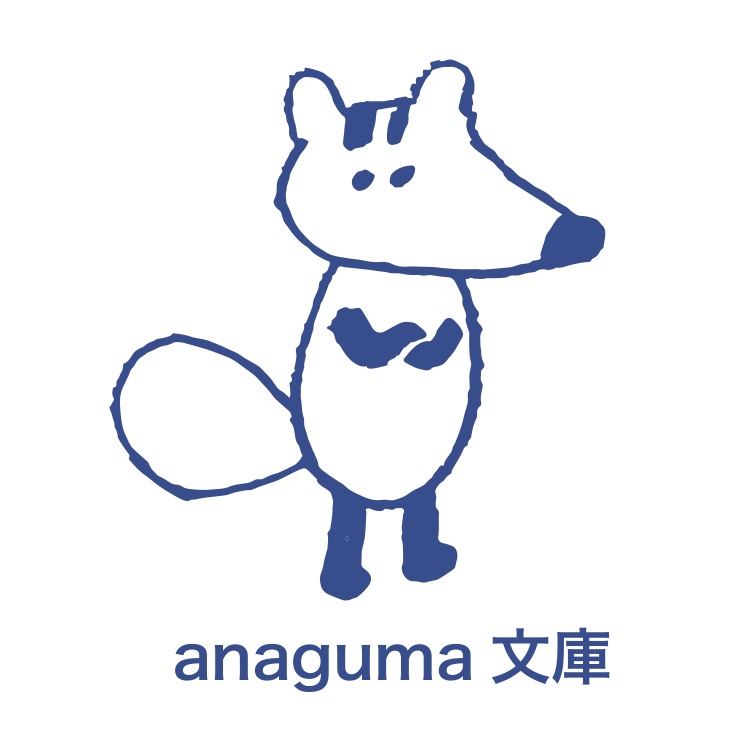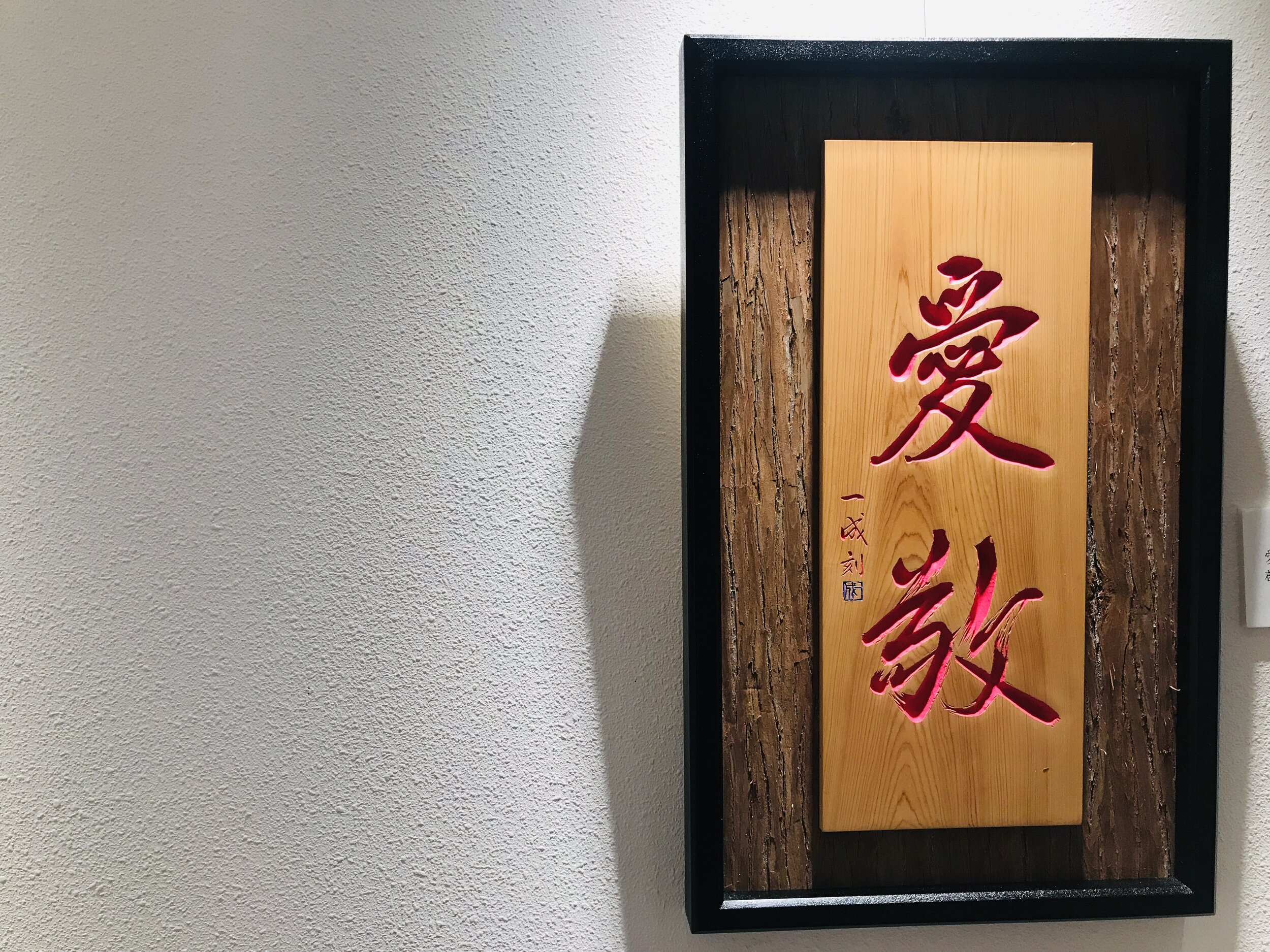木と言葉と人の喜び
作品を完成するために、土井一成先生は作品の言葉を4回書かないといけない。彼は最初に筆を使い、紙の上に字を書く。その次、その紙を木の一枚に貼り、書いた字を木になぞる。木に移した字をチェーンソーや刃物で掘ってから、最後にもう一度筆を出し、掘った字に色を加える。白い紙で書くだけであれば、土井先生は文字を1回書いたら終わる。彼は木の基盤を使っているからこそ、その作品に立体的な深みを入れられる。しかも、基盤の木目に合わせて言葉を選ぶ。例えば、年輪の細かくて、均一な吉野杉の基盤だと、お互いを永遠に支え合う冬目と夏目の上に「相思相愛」を書いた。また、同じような基盤に「温故知新」を書くことによって、吉野林業の歴史を囁いた。色の温かい板目の上に「夢」を情熱的な赤で。潮が引いているような年輪の上に、「花鳥風月」を鮮やかな緑で。土井先生の作品は様々な言葉を使うが、その中の1つが彼にとって特に大事だ。「『人の喜びは自分の喜び』、あれが好きやな」と彼はいつもの大きな笑顔で言ってくれた。
今年、土井先生は川上村の木工作家に声をかけ、先月の「秋の芸術祭イン川上村」の木工作家展を企画した。合計11人の作家さんは自分たちの作品を同じ場所で展示することによって、「木」の幅広い可能性が見えた。吉野杉の抗菌作用を活かす食パンの箱や、撫でて癒される「癒しのリンゴ」。屋根の柿(ルビ:こけら)や、折り紙の材料、吉野杉と檜の新たな使い方を見せてくれた作品が多かった。杉の綺麗な年輪とは対照的に、広葉樹の自然な木目や、木の節を特徴として使った作品もあった。来場者はそれぞれの作品をゆっくり見て、現地にいた作家さんと話し合った。
木と言葉を合わせる土井先生。彼を含めて、多くの作家さんは「木の良さ」を伝えくて、木工を始めた。その良さを伝えるために、自分の作品を見せる必要があるが、一人でやることより、他の作家さんと一緒に展示した方が迫力がある。「木」の可能性だけではなく、それぞれの個性も見えてきた。それで、来場者も作家さんも喜んだと思う。土井先生が自分でこんな言い方をしなかったけど、この木工作家展も「人の喜び」になった、と僕は思う。
Wood, Words, and the Joy of Others
In order to complete one of his works, Issei Doi has to write the words of his work four times. He first uses an ink brush and writes his characters on paper. He next attaches that paper to a sheet of wood, and traces the characters onto it. After carving the characters into the wood with a chainsaw or blade, he finally brings out his ink brush once more, and adds some color to the carved characters. If he was only writing on a white sheet of paper, Mr. Doi could write these characters once and be finished. It is because he is using a wooden substrate that he is able to put a three-dimensional depth into his work. On top of that, he also chooses his words so they relate with the wooden substrate. For example, for a Yoshino cedar substrate with fine, uniform year rings, atop the summer and winter grains that seem to eternally support one another, he wrote words that mean for “two to be in love”. Also, on a similar substrate, by writing words that mean “learning something new by studying the old”, he seems to whisper of the history of Yoshino cedar. On a warm-colored, flat sawn sheet of wood, there was “dream” in a passionate red. Over year rings that looked like a tide ebbing and flowing, there was “the beauties of nature” in a vibrant green. Mr. Doi’s works use a variety of words, but one of those is especially important for him. “‘The joy of others is also your own’, I really like that one,” he said, with his usual big smile.
This year he got in touch with other woodworking artists in Kawakami Village, and planned the woodworking artist exhibit at last month’s “Autumn Art Festival in Kawakami Village”. By having a total of 11 artists show their work in the same place, we were able to see the wide possibilities of “wood”. The bread box that makes use of Yoshino cedar’s anti-bacterial effect, or the Healing Apple that people can rub to feel better. Like the kokera shingles or the origami paper, there were many works that showed us new uses of Yoshino cedar and cypress. In contrast to the beautiful year rings of cedar, there were works that made the most of the natural grain of broad-leaved trees or used knots as a feature. Visitors were able to take a close look at each work, and speak with the artists themselves on-site.
Mr. Doi, bringing together wood and words. Many artists, including him, started woodworking because they wanted to convey how great wood is. In order to convey that, they need to show their work somewhere, but rather than doing so by themselves, they have a lot more impact displaying with other artists. It wasn’t just the possibilities of wood that we were able to see, but also the individuality of each artist and work. I feel like that brought some joy to both the visitors and the artists. Mr. Doi didn’t say it himself this way, but I feel like this woodworking artist exhibit was also a “joy for others” in that way.






